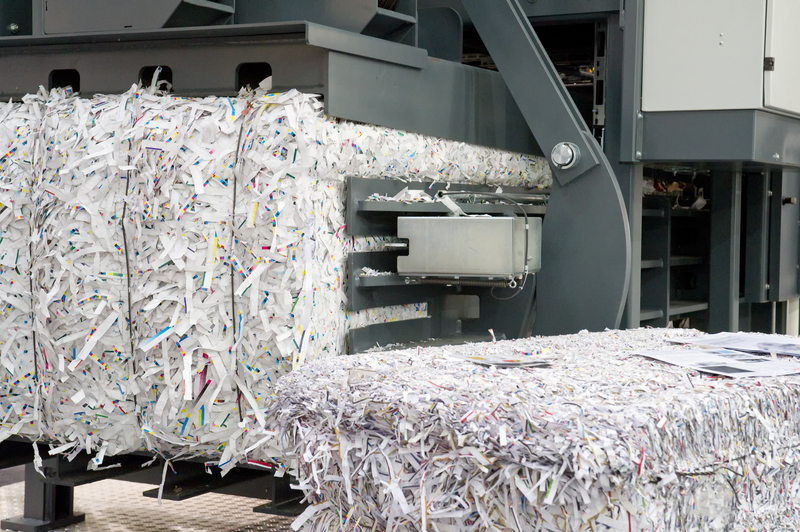Essential Steps to Safely Discard Used PPE Waste
The correct disposal of used Personal Protective Equipment (PPE) waste is a crucial factor in safeguarding public health and minimizing environmental impact. As communities, businesses, and healthcare facilities continue to rely on PPE for protection against infectious diseases and hazardous materials, it becomes imperative to establish and follow safe, responsible protocols for discarding used gear. In this comprehensive guide, we'll explore the essential steps to safely discard used PPE waste and offer practical strategies to ensure your disposal practices remain safe, compliant, and eco-conscious.

Why Proper PPE Waste Management Matters
Used PPE, such as masks, gloves, face shields, and gowns, can be potential sources of contamination and infection. Discarding them improperly can expose waste handlers, sanitation workers, and the general public to health risks, contribute to environmental pollution, and disrupt waste management systems. By adhering to correct PPE waste disposal procedures, we collectively reduce these risks and support a cleaner, safer environment.
The Challenges of Disposing PPE Waste
- Environmental Impact: Disposed PPE made from plastics and synthetic materials is a significant source of landfill and ocean pollution.
- Health Hazards: Contaminated PPE may contain pathogens that can spread infectious diseases if not handled properly.
- Volume Issues: The COVID-19 pandemic has heightened the volume of PPE waste worldwide, overwhelming traditional waste systems.
Step 1: Understanding Different Types of PPE Waste
Not all PPE is the same, and neither is all PPE waste. Segregating PPE waste correctly ensures that each type receives proper treatment and disposal. This is the first and most vital step in managing PPE waste disposal.
Common Categories of PPE Waste
- General PPE Waste: Used masks, gloves, and wipes from non-healthcare settings assumed to be non-infectious.
- Clinical or Infectious PPE Waste: PPE used in healthcare, quarantine, or by individuals known or suspected to be infected.
- Sharp PPE Waste: Items like face shields broken with sharp edges that could cause injury.
Identifying the category your used PPE falls into determines the correct subsequent disposal steps.
Step 2: Safe Removal of Used PPE
Removing PPE safely is essential to prevent self-contamination. If done incorrectly, you risk transferring germs to yourself and surrounding surfaces. Adopt these careful removal steps to mitigate risks:
- Remove gloves first by peeling them off from the inside out without touching the exterior surface.
- Take off masks by holding the ear loops or straps, avoiding contact with the front section.
- Remove goggles or face shields by the headband or arms, never the front.
- Wash your hands thoroughly with soap and water or use sanitizer after removing and before further handling PPE waste.
Always practice good personal hygiene during and after handling used PPE waste.
Step 3: Segregation and Collection of Used PPE Waste
Segregation means separating used PPE waste from regular household or office trash. This step is vital whether you are in a healthcare, public, or home setting.
How to Segregate PPE Waste Correctly
- Dedicated Bins: Use clearly labeled, leak-proof bins or bags specifically for PPE waste.
- Color-Coded Bags: Many regions recommend using yellow or red bags for infectious waste and black or blue for non-infectious PPE waste.
- Do Not Mix Waste: Keep used PPE separate from recyclables, compost, or standard refuse to avoid contamination and streamline treatment.
Tip: Double bagging used PPE--especially if wet or heavily contaminated--prevents spills and exposure during transport and collection.
Step 4: Proper Containment and Packaging of PPE Waste
Once segregated, it's crucial to package the waste securely. Proper containment helps protect anyone who handles the waste and prevents accidental leaks or contamination.
Best Practices for Containment
- Use strong, puncture-resistant bags or containers.
- Tie or seal bags securely before disposal.
- If disposing of sharp PPE (e.g., broken visors), use designated sharps containers.
- Label bags or containers clearly if possible--especially if the waste is hazardous or infectious.
Efficient packaging is a fundamental step in comprehensive PPE waste management.
Step 5: Storage Before Final Disposal
PPE waste should not linger in living or working areas. If immediate removal is not possible, follow these safety guidelines:
- Store securely in a designated area away from children, pets, and high-traffic zones.
- Keep storage spaces well-ventilated, dry, and inaccessible to unauthorized individuals.
- Arrange regular collection to prevent accumulation.
Step 6: Safe Disposal Methods for Used PPE Waste
The final step involves properly discarding the contained and stored PPE waste. Disposal methods may vary depending on regulations in your area, the type of PPE waste, and available waste management facilities.
Disposal Options for Various PPE Waste Types
- General PPE (Non-infectious): Can often be disposed of with regular solid waste if local guidelines permit. Ensure it is double-bagged and securely sealed.
- Infectious/Clinical PPE Waste: Must be disposed of through licensed medical or hazardous waste treatment services. Incineration or autoclaving is recommended.
- Sharp PPE: Use official sharps disposal programs or containers. Never place in standard trash bins.
Consult your local public health or environmental agency for region-specific guidance.
Step 7: Ensuring Personal Safety Post PPE Waste Disposal
Discarding used PPE is not the final step -- maintaining personal hygiene afterward is essential to safeguard your health.
- Immediately wash your hands with soap and water for at least 20 seconds.
- Disinfect any surfaces that may have come into contact with PPE waste.
- Avoid touching your face or personal items until hands are thoroughly clean.
Consistent personal hygiene practices complete the safe disposal process, reducing residual risks.
Step 8: Educating and Training for Safe PPE Waste Disposal
Awareness and training are the backbones of effective PPE waste management systems. Ensure everyone involved in handling or disposing of PPE items--whether at work or at home--is familiar with the essential steps to safely discard used PPE waste.
- Conduct regular training sessions for staff and family members.
- Display clear, informative signage near PPE waste stations.
- Share updates on revised protocols or local disposal regulations as they change.
Informed individuals are less likely to accidentally mishandle or improperly discard hazardous PPE.
Step 9: Special Considerations for Large-Scale or Commercial PPE Waste
Healthcare facilities, factories, and businesses generating large volumes of PPE waste may be subject to additional legal and environmental requirements. Failing to comply can result in fines, reputational damage, or worse--contribute to community outbreaks.
- Partner with Licensed Waste Management Providers: Engage certified professionals for regular collection, transportation, and treatment of PPE waste.
- Maintain Accurate Records: Document disposal volumes, types, and handlers for compliance and audit purposes.
- Install Automated Disposal Systems: Where feasible, use touch-free disposal bins and monitoring technology to streamline handling and minimize direct contact.
Businesses must treat PPE waste disposal as a critical operational process, not an afterthought.
Environmental Alternatives and Innovations in PPE Waste Disposal
With rising environmental concerns, there is growing interest in sustainable ways to discard used PPE waste. These innovations reduce the ecological footprint of PPE materials:
- Biodegradable PPE: Switching to biodegradable gloves and masks can decrease landfill impact.
- Recycling Programs: Some specialized facilities can recycle certain PPE items, including masks and gowns, once properly sterilized.
- Plastic-to-Fuel Conversion: Cutting-edge technology can transform synthetic PPE waste into usable fuel, closing the waste loop.
- Community Drop-Off Points: Some municipalities offer collection sites for residential or small-business PPE waste.
Support and advocate for local programs that aim for eco-friendly PPE waste management whenever possible.
Legal and Regulatory Compliance for PPE Waste Disposal
Adhering to local, national, and international PPE waste disposal guidelines is not just responsible--it's required. These standards are in place to ensure environmental protection and public safety.
- Stay updated on evolving local and global recommendations.
- Obtain permits as needed for the transport or disposal of infectious PPE waste.
- Properly document and report as required by regulators.
Legal compliance also mitigates liability and demonstrates your commitment to safety and wellness.

Common Mistakes to Avoid When Discarding Used PPE Waste
- Mixing contaminated PPE waste with general trash or recyclables.
- Not securing waste bags tightly, leading to leaks or exposure.
- Overfilling bins, making waste hard to handle or transport safely.
- Ignoring storage and hygiene measures after handling used PPE.
- Improper disposal of sharp PPE in non-designated containers.
Preventing these mistakes is key to a robust PPE waste management strategy.
Conclusion: Protecting Health and Environment by Following Essential PPE Waste Disposal Steps
The safe and correct disposal of used PPE waste safeguards both public health and the environment. Whether you are a healthcare professional, business owner, or individual, you have a vital role to play in handling PPE responsibly. Each of the essential steps to safely discard used PPE waste--identification, segregation, containment, storage, disposal, and post-disposal hygiene--contributes to a cleaner, healthier community.
As the demand for PPE remains high, let's ensure our approach to its disposal is both safe and sustainable. Stay informed, stay compliant, and commit to protecting our planet and its people through responsible PPE waste management.
Frequently Asked Questions on Used PPE Waste Disposal
- Can used PPE be recycled?
Standard curbside recycling programs rarely accept PPE. However, specialized programs may exist in your area. Always clean and segregate PPE before participating in such recycling initiatives. - Is burning PPE waste at home safe?
No. Incineration should only occur in regulated facilities with proper air filtration to avoid releasing toxins. - What if local guidelines differ from national recommendations?
Always follow the stricter and more protective guideline. - How often should I dispose of used PPE in a high-volume setting?
As often as required to prevent overflow, depending on usage rates, and in accordance with local regulations.
For the most accurate and up-to-date PPE waste disposal recommendations, consult your local waste management authority.
